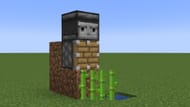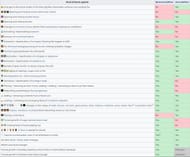Observers are one out of many redstone activated blocks in Minecraft. Along with its natural survival features, the game offers players the ability to build and invent several structural feats, with redstone contraptions being one of them.
This is where this block comes into play, as it plays a significant role in almost all redstone contraptions. Redstone is a component that enables players to send an active signal that automates another block or item.
It can either be used as an item itself or in several blocks. When structured together in a certain way, players can make innumerable redstone machines that automatically work or are activated with a push of a button or lever.
Chart New Territories with the ultimate Minecraft Seed Generator!
Everything there is to know about Observer blocks in Minecraft
How to craft the block
Players can easily craft the block with the help of three items. This block comes under the redstone category. It requires two redstone dust, six cobblestones, and one quartz.

Above is the exact crafting recipe for the block. Mining redstone ore blocks can quickly obtain redstone dust, and quartz can be found in the Nether in Nether Quartz ore blocks.
How to use the block
Once the player crafts one of these blocks, they can be placed and used in several redstone contraptions. An observer essentially observes and sends a redstone signal whenever it notices any change in the block area in front of it. The signal emitted by the block is of level 15 each time it detects a change.

As players place the block, they will notice a face-like texture on one side of the block. This is the observing side that will see any changes to the block area in front of it.
Remember that the block will only send a signal if the block area adjacent to the observing side changes. It won't be able to see beyond it.

For example, they place sugarcane and connect an observer block with a piston one block higher than the ground. Every time the sugarcane grows in front of the block, it will signal the piston via redstone dust, and the piston will break the crop.
This process can be repeated automatically, and players will have a working sugarcane farm.
If these blocks are placed opposite each other, they will continue to observe each other constantly and send redstone signals at a set interval. With this, players can make a compact redstone clock.

In this way, players can use the observer block in several other ways, like making a flying machine contraption or making any other automatic farm. These blocks are an essential part of nearly all redstone contraptions.
Limitations
Though observers can detect different block states, they cannot detect block updates, like the opening and closing of a chest. There is a long list of block updates that the block can or cannot detect, and it varies in both Java and Bedrock Edition. Below is a complete list of block updates:

Other than its primary usage in the game, the block can also be used for note blocks. When a note block is placed above the observer, it plays notes of a bass drum.
Uncover new worlds with our Minecraft Seed Generator!

